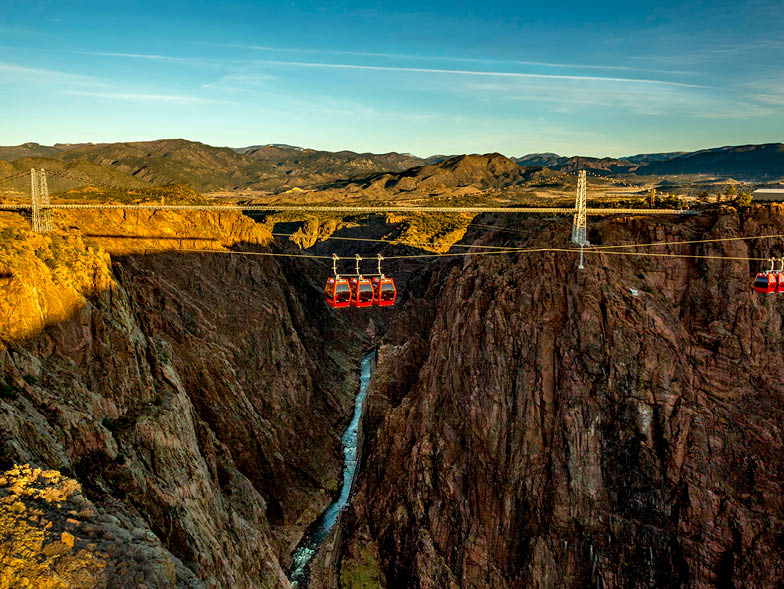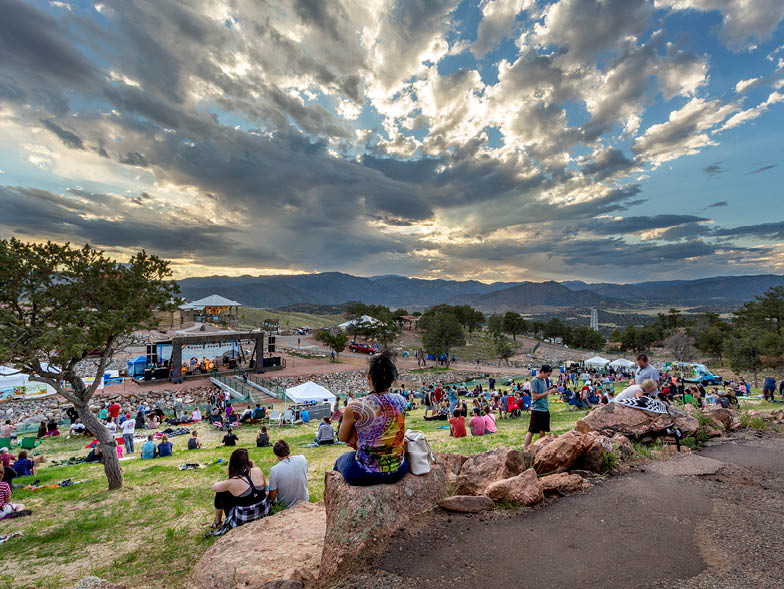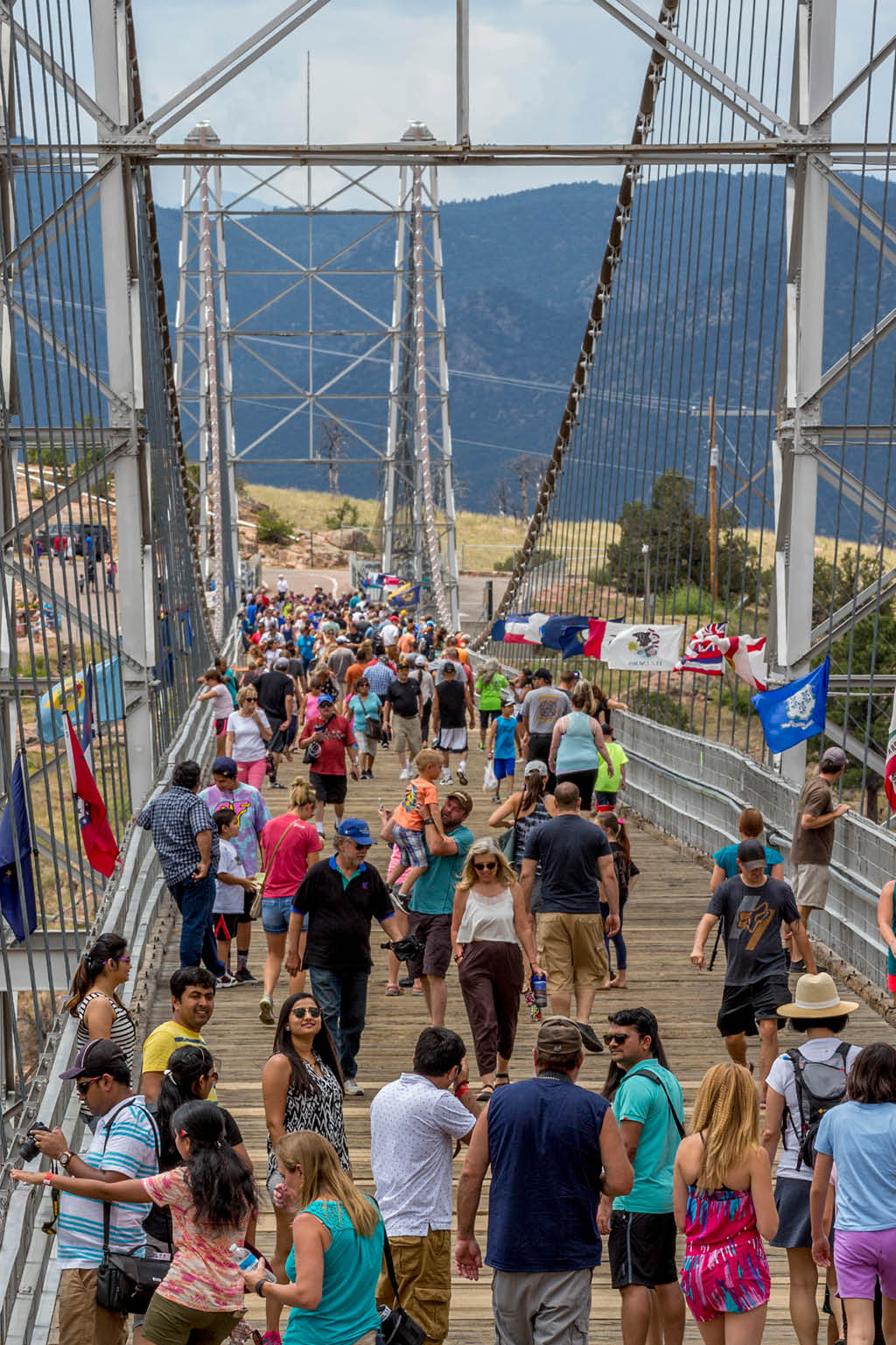Above the Arkansas River: Royal Gorge Bridge
“Bridges become frames for looking at the world around us.” — Bruce Jackson
Everybody loves a road trip. In fact, every year, Americans travel well over 250 billion vehicle miles per month during summer. And wherever you may roam, you’ll likely come across a bridge that will help get you to your destination. These structures are what tie our travels together, allowing us to drive from sea to shining sea. Bridges have been an essential part of America’s infrastructure since the country was founded—and they number over 600,000 today.
One of the most magnificent examples of these monuments of engineering can be found out west. If you’re traveling through Colorado and want a truly unique adventure, then take Route 50 through Cañon City to County Road 3A, where you’ll discover the Royal Gorge Bridge and Park attraction. Situated about an hour south of Colorado City and a little over two hours south of Denver, the Royal Gorge Bridge is the highest suspension bridge in North America. Standing at almost 1,000 feet above the Arkansas River, it encapsulates all that’s great about the American spirit, serving as an example of ingenuity, perseverance, and adventure.
The Beginning
“The Royal Gorge was a popular tourist attraction even before the bridge was built in 1929,” says Peggy Gair, human resources and public relations manager for Royal Gorge Bridge and Park. Indeed, the Arkansas River, the sixth longest river in the country, started (very gradually) creating the Royal Gorge millions of years ago; today, the granite-encased gorge is almost 1,000 feet deep and ten miles long, yet it’s only approximately fifty feet wide at its base. Because of its location and its propensity for silver and lead, discovered in the mid-to-late 1800s, it became a booming region and even caused a two-year railroad war over the rights to take passengers through the gorge.
The popularity of the gorge (also dubbed “the Grand Canyon of the Arkansas River”) as a tourist attraction led to even grander plans—namely, constructing a bridge across the chasm. “Even though it wasn’t a new idea to build a bridge to connect the 1,000-foot walls of the Royal Gorge, money and know-how were always an issue until the 1920s,” notes Gair. “San Antonio businessman Lon Piper came to visit in 1928, and he was instantly interested in building a bridge across the Royal Gorge. Having built a successful toll bridge across the Rio Grande, Piper thought he could also erect one here.
“The 5,000-acre Royal Gorge Park was given to Cañon City in 1906 by the US Department of the Interior,” Gair adds. “In order to build the bridge, the Cañon City Council had to approve it, which they did. Piper hired engineer George Cole, a fellow Texan, who had previously built toll bridges for him, to be the chief engineer and general superintendent for this project.” With both funding and expertise in place, construction of the bridge started on June 5, 1929. Remarkably, it took under seven months for about eighty men to complete the massive structure; even more remarkably, there were no deaths or even serious injuries from the venture—something that Piper and Cole took great pride in. The grand opening was December 8, 1929, and, as Gair notes, “It was popular from that very first day.”

Strength in Numbers
At the time it was built in 1929, the Royal Gorge Bridge stood as the highest suspension bridge in the world, a distinction it held until 2003. Its bridge deck stands 956 feet high, which, to put it in perspective, is higher than three Statues of Liberty. The bridge is 1,260 feet (about a quarter mile) long, and it is eighteen feet wide. In addition, the Royal Gorge’s main span is 880 feet, and its towers are 150 feet high.
A bridge of this size also needs to be fortified for safety and strength. According to Gair, there are 2,100 strands of galvanized wire in each cable, and the weight of the cables themselves is 300 tons; in addition, there are another 1,000 tons of steel in the floor of the bridge. With all that said, the bridge will support in excess of two million pounds. Speaking of millions, the cost to build the bridge in 1929 was $350,000. The replacement cost for the bridge today? At least $20 million.
Rising From the Ashes
Such a unique structure does come with unique challenges, though. According to Gair, the bridge is inspected several times a year, and the maintenance is usually to replace some of the bridge’s wood planks. The bridge was also refurbished in the early 1980s: abutments were replaced and strengthened, the bridge was repainted, and a new wind cable was added.
The biggest challenge by far, however, was a wildfire that threatened the very existence of Royal Gorge Bridge and Park. On June 11, 2013, stoked by dry conditions
, the fire started west of the park, jumped the Royal Gorge, destroying both sides of the park, and blazed toward town—getting perilously close to Cañon City. In all, it burned over 3,100 acres’ worth of park, Bureau of Land Management land, and private land—including forty-eight of the fifty-two attractions and buildings at Royal Gorge Park. Thankfully, all 1,200-plus visitors and employees, as well as sixty animals, were safely evacuated.
After the fire, the Royal Gorge Bridge stood defiantly above the rubble, with only about 100 of its 1,292 boards charred and burned on the south side of the bridge; these were immediately replaced. The park didn’t fare so well. With over 90 percent of the park razed, the only attractions left standing were the Royal Rush Skycoaster and the Plaza Theater and Historical Expo. Major attractions such as the Aerial Tram, the Incline Railway, the vintage carousel, the petting zoo, the Mountain Man Town, the Western Wapiti Wildlife Park, and the Visitor Center were all lost. These losses impacted the park and its employees, of course, but it went far beyond that, also impacting the economies of Cañon City and all of southern Colorado. So having a quick, safe rebuild was imperative to not only the park but also the entire region. With that in mind, demolition began within a couple of weeks of the disaster. As it had when the bridge was originally built, this project took only seven months to complete, with groundbreaking for the new Visitor Center taking place on January 30, 2014, and the entire park reopening just in time for Labor Day weekend—a mere fourteen months after the fire. What visitors experience now is an even more exciting Royal Gorge Bridge and Park.

The Visitor Experience Today
The Royal Gorge Bridge and Park is more popular than ever. On average, the park gets over 340,000 visitors per year and has welcomed over twenty-six million visitors since its opening. It is open 365 days a year, weather permitting, and it’s busiest during the summer months. Regardless of the time of year, though, Gair says the weather almost always cooperates: “This area experiences an average of 300 days or more of sunshine, so it’s generally beautiful weather, even in the winter. The wind does blow quite often, which makes the bridge sway a little bit (which can add some thrills), and there is always a breeze at the center of the bridge. The park rarely closes, usually for a snowstorm. But even then, we have a saying in Colorado: ‘If you don’t like the weather, wait twenty minutes, and it will change.’”
If you’re daring enough to walk across the Royal Gorge Bridge, prepare accordingly. depending on how quickly you walk and whether you stop to enjoy the gorgeous views of the gorge, it should take twenty minutes or less to walk the span of the bridge. And what do you do if you’re suddenly spooked by the sheer altitude? “People can get a little freaked out, especially those who suffer from vertigo,” Gair admits. “They tend to walk down the middle of the bridge and won’t go look over the side. We’ve had a few guests get out on the bridge and freeze up—they don’t want to go forward or backward! Our park rangers are great, though, and they will offer them a ride back across the bridge in their golf cart.”
You can even make the trek across the bridge with your favorite pooch. “This park is dog friendly, so it’s not unusual to see dogs on leashes with their humans crossing the bridge,” Gair continues. “Like most people, most dogs love it, while some don’t. One dog was so scared, the owners put him in their baby stroller with their child and threw a blanket over his head.”

The bridge may be at the center of the park (literally and figuratively), but there’s also something for everyone at the new and improved Royal Gorge Park. After the fire of 2013, the park recreated some old attractions—but also added some very exciting new ones. One of the more popular new rides is the Aerial Gondolas, six eight-seat enclosed Poma cabins that allow you to bask in the breathtaking views of the scenery all around you while the cars gently carry you across the Royal Gorge. For more adventurous types, the Royal Gorge Cloudscraper by ZipRider is for you. This extremely popular ride is actuallythe highest zip line in America, taking its riders across the gorge about 1,200 feet over the river. The Royal Rush Skycoaster, built in 2003 (and one of the two rides that survived the 2013 fire), is another extremely popular adrenaline thrill ride. Imagine being placed in a harness, being drawn up to a 100-foot tower, and then swinging out, free-fall-style, over the Royal Gorge at 50 miles per hour. The sensation of diving into a 1,000-foot-deep chasm is a once-in-a-lifetime experience.
You can also experience more down-to- earth fun at the park. The Plaza Theater and Historical Expo offers a seventeen-minute film examining the history of the area, including the building of the bridge and the reconstruction after the fire. You can also see artifacts and photos from the original construction of the bridge displayed at the Expo. Then take the kids to Tommy Knocker Children’s Playland, which features gigantic two-story climbing structures, crawling mounds, a fantasy-style carousel, and a splash pad.
The Visitor Center, which sits on the edge of the Royal Gorge, is practically brand new as well. While there, you can shop at the gift shop or walk out on a massive deck where guests can sit by the fireplace and take in the awesome views of the gorge and the Sangre de Cristo Mountains. You can enjoy some quality food, like burgers, sandwiches, and salads, at Café 1230—while enjoying a view from 1,230 feet over the Arkansas River. History is incorporated into the Visitor Center as well: as a reminder of its rebirth, the front of the Visitor Center has the original milled burned bridge planks from the fire of 2013 as part of its exterior wall.
The Royal Gorge Bridge and Park certainly has come a long way as an unforgettable travel experience—from its historic beginnings, through trials by fire, to its modern-day attractions for thrill-seekers. As such, North America’s highest suspension bridge stands as an American landmark that not only bridges a 1,200 foot-wide natural chasm, but also past and present.
For more info, visit royalgorgebridge.com.






















